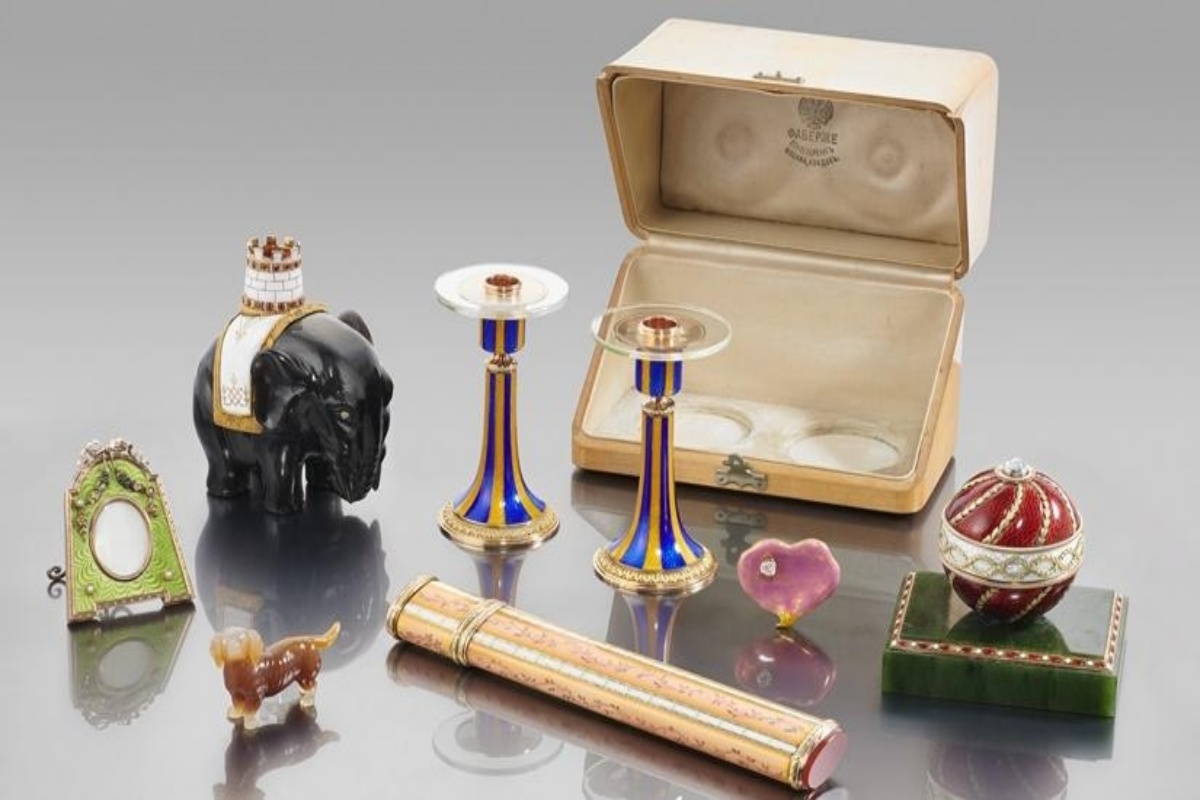A magnificent collection of Faberge pieces belonging to Alexandra Anastasia Hamilton, Duchess of Abercorn, will be auctioned at Christie’s Russian Art Sale in London on June 7, 2021.
The estimated value of the 18 lots ranges from 8,000 to 90,000 pound. The collection was initiated by Grand Duke Mikhail Mikhailovich and his wife Sophia Mehrenberg, Countess de Torby. Peter Carl Faberge (1846-1920) is best known for the Easter eggs he began making in 1884 for the Tsar and Tsarina of Russia. After studying in several European centres, he returned to St. Petersburg in 1864 and joined his father’s firm. In 1872 he took over the establishment and became the Tsar’s Court Goldsmith in 1885. His international reputation was secured in 1900 at the Paris Exposition and he began creating objects for Edward VII and other European royals. The firm’s success continued until the 1917 Revolution when Faberge escaped to Switzerland.
Advertisement
Here are the few elements from the Faberge Collection that will go for sale:
One of the most outstanding pieces in the collection is a figurine of an elephant, carrying a tower on its back: it is an allusion to Denmark’s highest national award, the Order of the Elephant. The Empress Maria Feodorovna, who was born in Denmark, used to give such elephant figurines as presents to her family (estimate: GBP70,000-90,000).
Faberge candlesticks
The yellow and blue Rothschild racing colours were registered by Meyer Rothschild in 1843. They were first used for orders placed by Leopold de Rothschild, one of Faberge’s major clients, in 1909. The present pair of candlesticks, was purchased by Leopold de Rothschild on December 7, 1909. According to Henry Bainbridge, manager of Faberge’s first London branch on Dover Street, which opened in 1903 and author of the very first book about Carl Faberge published in 1949 recollections, Leopold de Rothschild often gave friends enamelled Faberge pieces in the family’s racing colours as tokens. “Every time he wanted to say “Good morning!”, “I like you!” or “Don’t bother me anymore!” he would simply stick a blue-and-yellow Faberge piece in his friend’s pocket.” (H.C. Bainbridge, Peter Carl Faberge, London, 1949, p. 83 | estimate: GBP40,000-60,000).
Faberge brooch
The present brooch is listed in the book of His Imperial Majesty’s Cabinet with a value of 65 roubles. It was one of the items which Emperor Nicholas II and his wife Alexandra Fedorovna took with them on their journey to Darmstadt in August 1899. It is possible that it was a gift from the Emperor to the Grand Duke Mikhail Mikhailovich and the Countess de Torby, who were living in Wiesbaden at the time of the Imperial visit before settling permanently to London in 1900 (estimate: GBP12,000-18,000).
Alexandra Anastasia Hamilton, Duchess of Abercorn, is the eldest daughter of Lieutenant Colonel Harold Phillips and his wife Georgina Werner. Friends and relatives knew the Duchess of Abercorn as ‘Sasha’. She was very much engaged in philanthropy and in honour of her ancestor, the Countess de Torby’s great-grandfather, the renown Russian poet Alexander Sergeevich Pushkin, she established the Pushkin Prize for Literature and the Pushkin Foundation.









